Icewind Dale: Rime of the Frostmaiden is all about horror and eerie encounters in the snowy wastes—with a few lighthearted interludes thrown in to keep the tone adventurous. Still, just like how reading the Wikipedia summary of a horror movie isn’t scary, running a horror encounter as-written isn’t enough to scare and excite your players. As a DM, you need to know how to create a mood of dread with your words, your atmosphere, and your players’ buy-in.
Creating Horror through Voice
The main way that Icewind Dale: Rime of the Frostmaiden creates horror is through words. It’s a book, after all, that makes sense! Many of the right words have been handed to you on a silver platter, through boxed text and in descriptive text. If you want to know how to say words in a way that absolutely drips with malice and malevolence, listen to films and radio dramas by the old masters of horror: Boris Karloff, Christopher Lee, Peter Cushing, and Vincent Price, to name just a few. Try to emulate the way they say words. Feel the weight and cheeky darkness that fills every syllable. Listen for the timing of their phrases, how they pause ever so slightly upon certain words to add drama to what they’ll say next.
Their delivery may feel campy or overwrought these days, but D&D is a game well-suited to a little bit of B-movie cheese. Rime of the Frostmaiden may have been inspired by films like The Thing and books like At the Mountains of Madness, but you can use your words and tone of voice alone to inject some gently campy, Hammer Horror-style spookiness into your game.
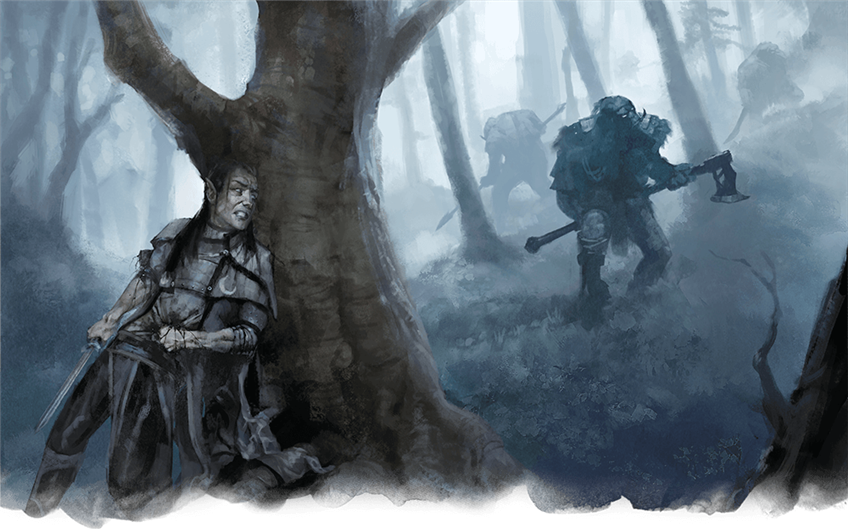
Creating Horror through Atmosphere
Music, temperature, isolation, and lighting all contribute to horror. Imagine watching a scene from your favorite movie, but the quiet, discomfiting soundtrack of discordant strings and atonal bells is replaced with silence. Even though silence can be scary in its own right, it can feel like there’s something missing. Music is a powerful tool in the hands of a Dungeon Master, and you can use it to create tension, pulse-pounding panic, or any number of other powerful emotional sensations within your players. Using tools like Syrinscape or even just an MP3 player hooked up to a Bluetooth speaker can transform your gaming room into a chamber of claustrophobic horror.
By using lights, you can amplify this effect even further. Colored LEDs are somewhat over-the-top, but by installing a few color-changing lights, you can invoke the chilly blues of Icewind Dale when your players venture onto the ice fields, or turn up a warm red tone when they’re relaxing in an inn in Ten-Towns. You can even use the transition between “normal” lighting and colored lighting to mark when you’re playing and everyone should focus versus pre-game, post-game, and break time.
Of course, if using color-changing lights is an unnecessary extravagance, you can still use lights to create tension. Keeping a light above your table, and dimming the lights around your table, can create the feeling of being in a smaller space than you actually are. That alone can be enough to evoke feelings of fear—or at least of the game being “serious business.”
If you’re playing D&D remotely—as many people are during the COVID-19 pandemic—it may be hard to create an immersive atmosphere of eerie darkness and isolation. This is mostly because players are sitting in the comfort of their own rooms, in bright lights, and there’s no spooky music being piped into their headphones. But it’s also because playing D&D digitally is inherently distracting. It’s hard for players to focus in and hang upon your every haunting word when they have a web browser open, there are pets or family members vying for their attention, and the clutter of their everyday lives are intruding upon their gaming space.
If you’re in this unfortunately (and likely) circumstance, focus on highlighting the immersive elements that you can control. During play, use your video call service (like Zoom or Discord) to send your players images of the dark, frigid, and agoraphobic wastes of Icewind Dale, and of the grisly and gruesome creatures that long to tear them limb from limb. Use virtual tabletop tools to use maps (even if you don’t track movement tactically) to better ground them in the world that they’re living in.
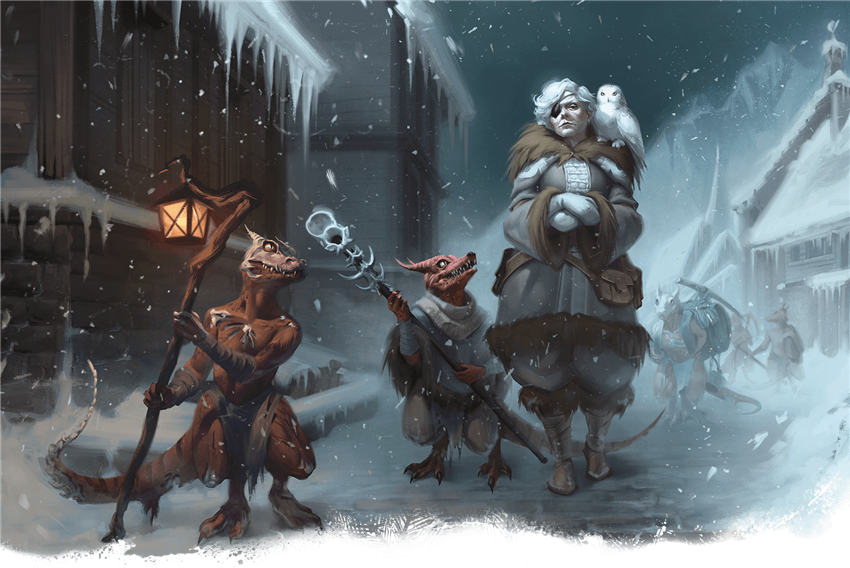
Creating Horror through Player Buy-In
D&D is a game of collective imagination. The more players want to be scared, the more likely they will dream up images that will scare them. Even players that don’t want to be scared a lot will have fun as long as they’re willing to be scared a little. One thing that you need to establish from the very beginning is that everyone you’re playing this adventure with will have fun being scared. If there are players that want to opt out of horror entirely, then all the hard work you’ve done with your voice and with the atmosphere will be for naught.
While playing D&D, emotions are a force multiplier. One person loving the horror is fun, but two people engrossed in the macabre is more than twice as fun, and three is more than three times as fun—and so on. If all of your players but one are loving the spooks, but that one person is adamantly opposed to being scared, it’ll bring down the overall fun of the group, not just their own fun. This isn’t to cast the anti-horror player in a villainous light; they’re just in a game that doesn’t suit their playstyle.
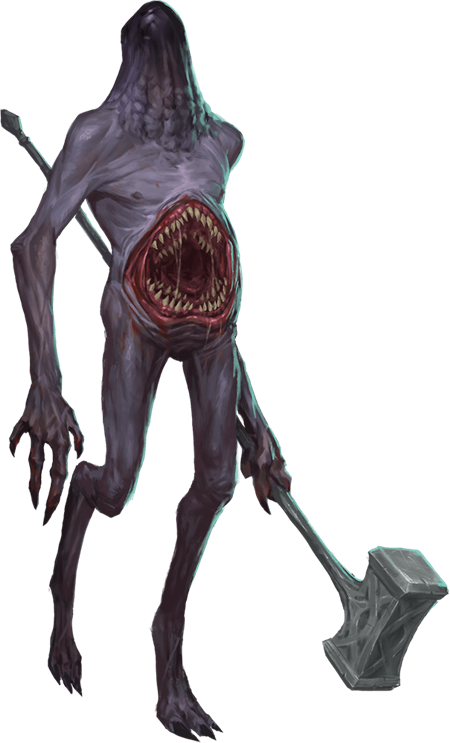 The best thing you can do to ensure that everyone has a good time from the start is to call a session zero and discuss what you and your players like about the horror genre and what you dislike about it. What horrific themes are fun for everyone to explore, and which ones are so deeply unpleasant that touching on them in-game would make the game worse. Icewind Dale: Rime of the Frostmaiden includes horrific elements including:
The best thing you can do to ensure that everyone has a good time from the start is to call a session zero and discuss what you and your players like about the horror genre and what you dislike about it. What horrific themes are fun for everyone to explore, and which ones are so deeply unpleasant that touching on them in-game would make the game worse. Icewind Dale: Rime of the Frostmaiden includes horrific elements including:
- Alien gestation (chestburster-style)
- Buried alive (under an avalanche or a cave-in)
- Brainwashing
- Freezing to death
- Inbreeding and deformities
- Longing for death
- Madness
- Missing limbs and extremities (from frostbite)
- Murder
- Possession
You may find other elements that you want to talk with your group about as you play through the game. Even though it “spoils” a big reveal, it’s worth holding a supplemental Session Zero to talk about new horrific content that you want to include to make sure that no one in your group has a major (or minor!) phobia that they haven’t told you about.
If you ever find yourself worrying that one or more of your players aren’t enjoying the genre of game you’re running, it may be incumbent upon you as the Dungeon Master to talk to them. Initiating conversations like this can be stressful, since you don’t want to come into emotional conflict with your friends, but calling up a new Session Zero and talking out any problems that you think have arisen will save you a lot of awkwardness and unhappiness in the long run.
Don’t Forget to Break the Tension
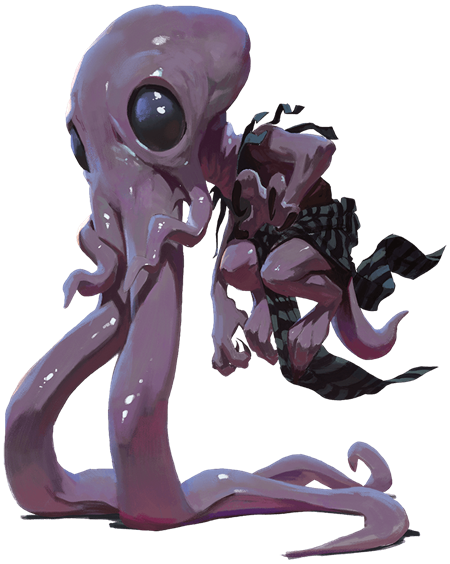 Don’t let your horror campaign become a dirge! If your campaign is a pressure cooker of tension and despair the entire time, you and your players will start to feel stressed out—and not in a fun way. Fortunately, it’s the natural state of D&D players to want to make jokes and have lighthearted fun while playing, and Icewind Dale: Rime of the Frostmaiden encourages those instincts every now and then by including moments of humor amidst the suspense.
Don’t let your horror campaign become a dirge! If your campaign is a pressure cooker of tension and despair the entire time, you and your players will start to feel stressed out—and not in a fun way. Fortunately, it’s the natural state of D&D players to want to make jokes and have lighthearted fun while playing, and Icewind Dale: Rime of the Frostmaiden encourages those instincts every now and then by including moments of humor amidst the suspense.
Finding the perfect balance between tension and levity is no easy task, and the correct ratio of each is different for every group—and every person! The only way you’ll be able to get it right is by trying things out and learning from your mistakes. You (or a friend) might break the tension just before a major reveal, and deflate a moment you worked hard for. This is a bummer, but unless it happens all the time, it’s not a problem. If your campaign is plagued by constant tone issues, it’s probably worth revisiting your Session Zero and talking this out with your players. Constantly breaking the dark tone of the story might be a sign that your players really just want to play a more lighthearted adventure—or, it could be a series of unfortunate tonal mismatches. The only way to know is to talk it out like friends.
What kind of spooky stories are you most excited to tell in your D&D campaign? Let us know in the comments!
Create A Brand-New Adventurer Acquire New Powers and Adventures Browse All Your D&D Content
 James Haeck is the lead writer for D&D Beyond, the co-author of Waterdeep: Dragon Heist, Baldur's Gate: Descent into Avernus, and the Critical Role Explorer's Guide to Wildemount, a member of the Guild Adepts, and a freelance writer for Wizards of the Coast, the D&D Adventurers League, and other RPG companies. He lives in Seattle, Washington with his fiancée Hannah and their animal companions Mei and Marzipan. You can find him wasting time on Twitter at @jamesjhaeck.
James Haeck is the lead writer for D&D Beyond, the co-author of Waterdeep: Dragon Heist, Baldur's Gate: Descent into Avernus, and the Critical Role Explorer's Guide to Wildemount, a member of the Guild Adepts, and a freelance writer for Wizards of the Coast, the D&D Adventurers League, and other RPG companies. He lives in Seattle, Washington with his fiancée Hannah and their animal companions Mei and Marzipan. You can find him wasting time on Twitter at @jamesjhaeck.








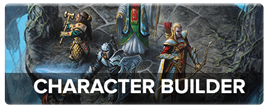
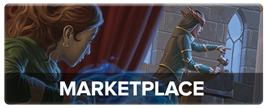
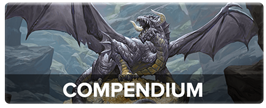
-
View User Profile
-
Send Message
Posted Sep 20, 2020The advice to have "player buy-in" is immensely powerful. Just starting off with all players in agreement that "we are going to be scared" will create that tension. I've seen it first hand, and all of a sudden players start scaring themselves as they lean into the tone on their own!
-
View User Profile
-
Send Message
Posted Sep 20, 2020lol
-
View User Profile
-
Send Message
Posted Sep 20, 2020I never had issues playing or running games where anything was too much in the terror department. Even in CoC I have never seen actual fear come over any players.
-
View User Profile
-
Send Message
Posted Sep 20, 2020I would just reskin the "cuteness" part out of it. The "ray-gun" gets turned into some living, squirming tube with force or psychic energy flowing from it and get rid of the purple robes from the squidling and make it naked and emaciated.
-
View User Profile
-
Send Message
Posted Sep 20, 2020It does not feel like "The Thing" like they advertised. It is a great sandbox= survival adventure.
-
View User Profile
-
Send Message
Posted Sep 20, 2020Yea, I don't find it too scary either... It's a good module anyway
-
View User Profile
-
Send Message
Posted Sep 20, 2020I think the trick with music is twofold. First, you don't want something too recognizable. For example, I know a lot of people use the Lord of the Rings soundtrack. The music is awesome, but everyone knows it and the second most players hear it, it takes them out of the moment. Second, you don't want something that is too "busy" or melodic. A strong melody can be distracting. Especially, if it is a powerful melody. An example, The Duel of the Fates. An epic battle song, but a DnD combat lasts much longer, and playing something like that on repeat can be grating.
I think Ambient background music works best for most things. Iron Cthulhu and Cryo Chamber both have some great compilations. For combats, I try to use something percussive but not a lot of strong melodic music. These work well to fall into the background and not be too distracting. This is one I did myself. I have some for Rime coming very soon.
https://www.youtube.com/watch?v=s2tg2eFoCww
-
View User Profile
-
Send Message
Posted Sep 20, 2020I have found the same problem. I was using Syrinscape, but one of my players cannot run it on an old Mac.
-
View User Profile
-
Send Message
Posted Sep 21, 2020Great Article!
-
View User Profile
-
Send Message
Posted Sep 21, 2020on a scale of "To be the very best" to "Curse of Strahd" how heavy is this in terms of horror? I love me some CoS and the survival part of it, would this be in a similar vein?
-
View User Profile
-
Send Message
Posted Sep 21, 2020Play up the helplessness of the creature, the way the tentacles flop and grasp fruitlessly at the ground as its oversized head heaves to one side as it mewls sorrowfully. Mention the overwhelming scent of fresh, briny crab that rises from the creature, and once the party's close enough to smell them, the helpless squirming is revealed to be a ruse as the mewling becomes hungry shrieks as they swarm the nearest PC.
Or these ridiculous monsters could be used as a "break the tension" moment. All good scary stories have a bit of comedy, to take the edge off and to allow for the participants to breath a sigh of relief. Otherwise they become numb to the scares, and begin to anticipate them, ruining the delivery before it happens.
EDIT: This is to 6thLyran
-
View User Profile
-
Send Message
Posted Sep 21, 2020Running a horror campaign at the moment. It's an odd thing to run and generally its very difficult for players to run characters who are scared. Its very easy for a player to make sound decisions when their character would not. Music is nice but the first thing my players do... is mute the music.
I've found atmosphere is a big element and that it takes one specifically run encounter were everything was not as it seems or has horrific implications. like a witch coven harvesting homeless people / children to turn their bones into bread flour at the towns most popular bakery... and the players become a lot more wary of even bright and cheery situations.
-
View User Profile
-
Send Message
Posted Sep 21, 2020Two words.
Surprise round.
-
View User Profile
-
Send Message
Posted Sep 21, 2020How come? I'd say I've had the opposite experience. In person trying to play music from one source and people chattering over it. Versus sharing computer audio on zoom and everyone can hear it evenly.
-
View User Profile
-
Send Message
Posted Sep 21, 2020Im thinking of running it to level 6 and ending at the dragon killing stuff arc and once they finish that moving them to something else any suggestions about modules for level 6 characters
-
View User Profile
-
Send Message
Posted Sep 22, 2020I'll tell you a story about one of my most favourite sessions that really scared my players. Spoilers below for The hidden shrine of tamochan.
My players were getting up to the room where Xipe the oni was hiding in the basement area in the hidden shrine of Tamochan and when one of my players saw a hole in the roof they wanted to investigate. So when they did go up to the basement they started hearing something breathing in the basement then the power in my house probaly shorted but all the lights in my house where turning off and on and scaring the hell out of my players and It was one of the best sessions I ever had.
-
View User Profile
-
Send Message
Posted Sep 22, 2020Try taking inspiration from Horror Comedies, usually these stories contrast the grimness of the situation with the absurdity of certain reactions characters give - such as a character giving a cheery quip whilst clearly disturbed and shaken, or having the monster bumble around haphazardly (like Scream or certain zombie films). These moments shouldn't happen constantly as they'll undermine the threat of the situation, but should be placed thoughtful as a way to lighten the mood at key moments during a tense situation.
-
View User Profile
-
Send Message
Posted Sep 22, 2020do you have any tips for new DMs?
-
View User Profile
-
Send Message
Posted Sep 22, 2020Wait... what ?? Gnomes with tentacles ???
What kind of witchery is this ??
-
View User Profile
-
Send Message
Posted Sep 22, 2020hi